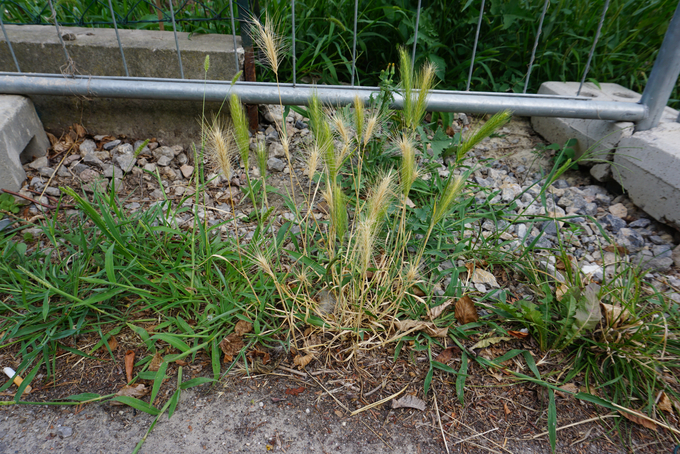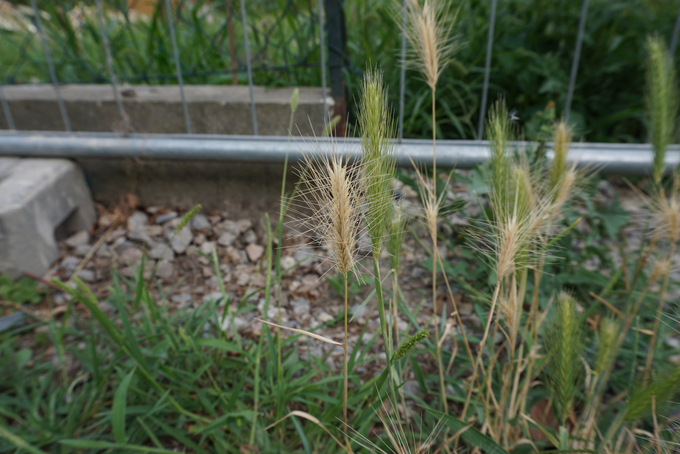Common mouse barley
Appearance
Mouse barley is an annual heat-loving grass. However, it can overwinter if the seeds have germinated only in late summer or fall. The species reaches growth heights of 15 to 40 cm. Mouse barley forms a spike that can be up to 10 cm long. There are three single-flowered spikelets on each node. The glumes of the middle spikelet are clearly fimbriated. The awns of the glumes are up to 2.5 cm long. The flowering period is from June to October.
Distribution
The main distribution is in the warm lowlands of eastern Austria and there especially in urban agglomerations. The species is bound to more or less dry sites and mainly colonizes ruderal meadows, railroads, roadsides and traffic islands. The plant is well adapted to pruning and treading. Cities are heat islands and offer a variety of adequate sites, they are therefore a particularly suitable habitat for the mouse-barley. In the literature, the species is therefore also referred to as "urbanophile". Occurrences also exist outside cities, especially along field margins or on wasteland.
Economic importance
In fields, the species has no economic importance as a weed. Mouse barley is often considered a "weed" because it likes to colonize ruderal areas that are perceived as "unkempt."
However, mouse barley can be problematic for animals due to its natural dispersal strategy. The ripe seeds have barbs and stick to clothing or shoes as they pass by, but also to the fur (ears, eyes) of animals. This causes itching in animals, which they counteract by scratching or rolling. However, this can lead to the seeds getting deeper into the fur or into the eyes, which can eventually lead to painful inflammations.
Last updated: 20.07.2023
automatically translated

